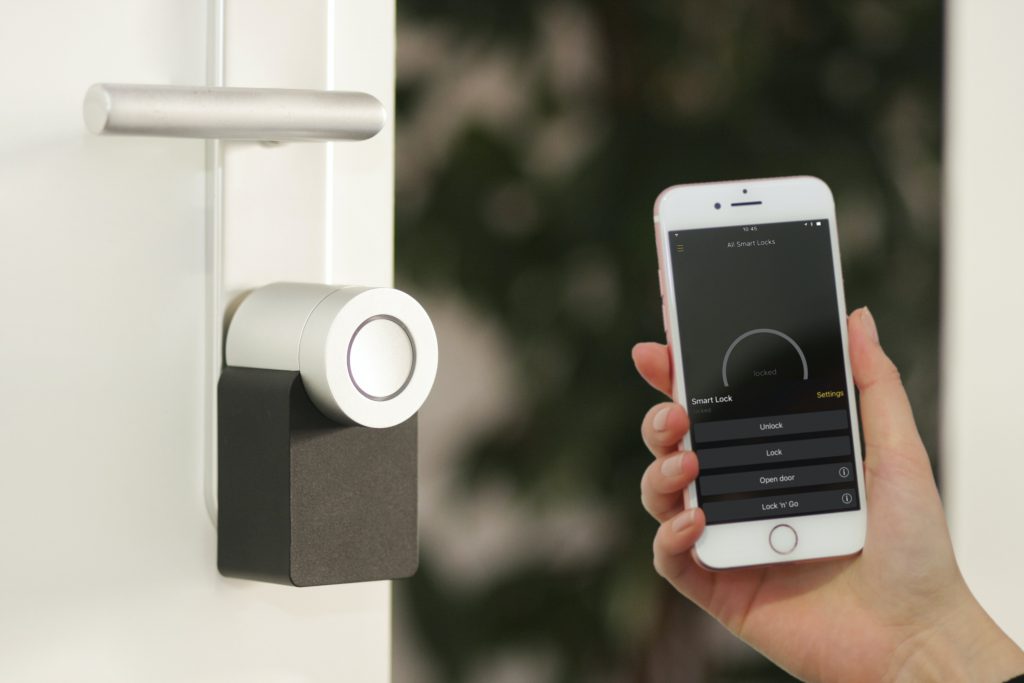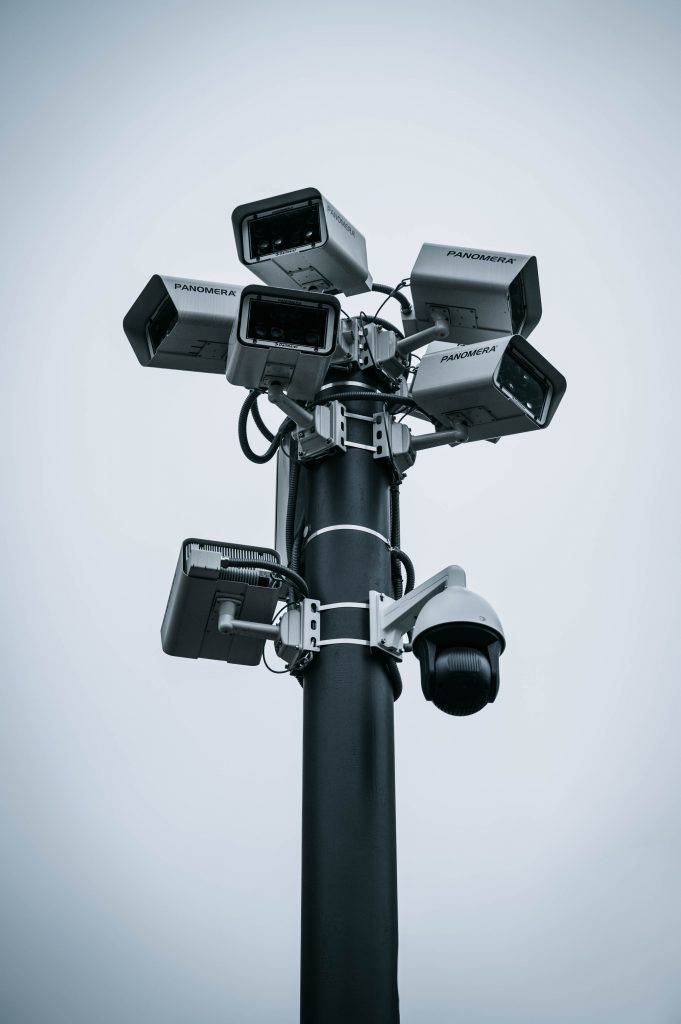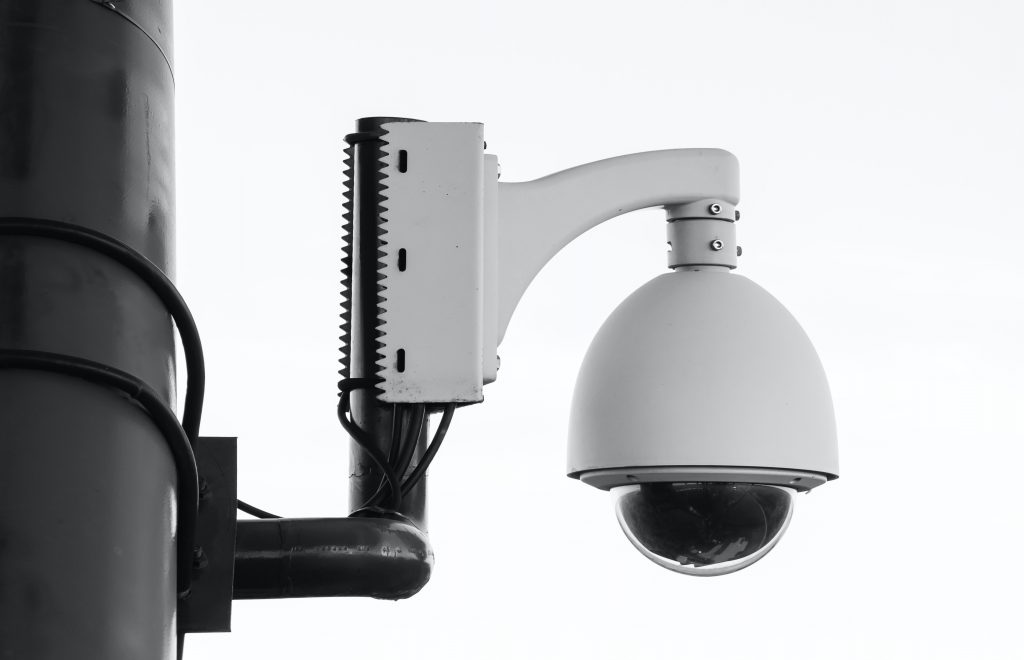In this comprehensive guide, you will discover everything you need to know about selecting the perfect security system for your home. Whether you’re a first-time homeowner or looking to upgrade your existing system, we’ve got you covered. From understanding the different types of security systems available to evaluating your specific needs and budget, this guide will equip you with the knowledge and confidence to make an informed decision. With safety being a top priority, it’s time to take control and ensure peace of mind for you and your loved ones.

Choosing the Right Security System for Your Home: A Comprehensive Guide
When it comes to ensuring the safety and security of your home, choosing the right security system is essential. With the multitude of options available in the market, it can be overwhelming to determine which system is best suited for your needs. This comprehensive guide will walk you through the process of assessing your home security needs, exploring different types of security systems, understanding key components, considering installation options, evaluating monitoring services, and exploring additional features and upgrades. By the end of this guide, you will be equipped with the knowledge and understanding to make an informed decision and choose the perfect security system for your home.
1. Assessing Your Home Security Needs
Before diving into the world of security systems, it is crucial to assess your specific home security needs. This step will help you understand the purpose of installing a security system, identify vulnerabilities in your home, and establish a suitable budget.
1.1 Understanding the Purpose
Ask yourself why you want to install a security system in your home. It could be to deter burglars, monitor for potential intrusions, protect your family and belongings, or simply gain peace of mind. Understanding the purpose will help you determine the level of security you require and the features you prioritize.
1.2 Identifying Vulnerabilities
Take a walk around your home and identify potential vulnerabilities. Are there any weak entry points such as doors or windows? Are there blind spots that need surveillance coverage? Assessing these vulnerabilities will guide you in selecting the appropriate components for your security system.
1.3 Determining Budget
Establishing a budget is an important step in the decision-making process. Determine how much you are willing to invest in a security system, considering both the upfront cost and any ongoing expenses. Keep in mind that investing in a reliable and comprehensive system may require a higher upfront cost but can provide long-term security benefits.
2. Types of Security Systems
Now that you have a clear understanding of your home security needs, it is time to explore the different types of security systems available in the market. Each type has its own unique features and advantages, catering to specific requirements.
2.1 Monitored Systems
Monitored systems are professionally monitored by a security company. They offer real-time monitoring of your home and prompt response to alarms or emergencies. Monitored systems provide an additional layer of security and are suitable for those who prefer professional assistance in handling security incidents.
2.2 Unmonitored Systems
Unmonitored systems do not involve professional monitoring. Instead, they rely on an audible alarm or a notification sent directly to your smartphone when a security breach occurs. These systems provide a cost-effective solution and are suitable for those who prefer to handle security incidents independently.
2.3 Wireless Systems
Wireless security systems are easy to install and operate. They do not require extensive wiring, minimizing installation time and cost. Wireless systems utilize wireless communication between components, offering flexibility in placement and easy expandability.
2.4 DIY Systems
DIY (Do-It-Yourself) systems are designed for easy installation by homeowners themselves. These systems come with step-by-step instructions and often do not require professional assistance. DIY systems provide flexibility and affordability but may require more effort on your part.
2.5 Smart Home Integration
Smart home security systems integrate with your existing smart home devices and automation systems. These systems offer enhanced convenience and control by allowing you to monitor and manage your home security from anywhere using your smartphone or voice commands.
3. Key Components of a Home Security System
Understanding the key components of a home security system is vital to make an informed decision. Each component plays a crucial role in ensuring the effectiveness of your security system.
3.1 Control Panel
The control panel serves as the brain of your security system. It allows you to arm and disarm the system, control various features, and receive notifications. Choose a control panel that is user-friendly and provides easy access to system controls.
3.2 Sensors
Sensors detect changes in the environment and trigger the alarm when unauthorized activities occur. Door and window sensors, motion sensors, and glass break sensors are common types of sensors used in home security systems. Consider the range, sensitivity, and accuracy of sensors when selecting a system.
3.3 Alarms
Alarms are designed to alert you and deter intruders when a security breach occurs. These can be in the form of loud sirens, flashing lights, or silent alerts sent to your smartphone. Consider the volume and effectiveness of the alarm in different scenarios.
3.4 Surveillance Cameras
Surveillance cameras provide visual monitoring of your home and act as a deterrent to potential intruders. They can be installed indoors or outdoors, and some offer advanced features such as night vision, motion detection, and live streaming. Consider the video quality, field of view, and storage options when choosing cameras.
3.5 Motion Detectors
Motion detectors sense motion and can activate alarms or trigger surveillance cameras. They are typically used in areas where unauthorized movement is a concern, such as hallways or entry points. Consider the detection range, pet immunity, and false alarm prevention features of motion detectors.
3.6 Door and Window Sensors
Door and window sensors monitor the opening and closing of entry points. They trigger an alarm when a door or window is opened forcefully or without authorization. Consider the installation ease, compatibility with various door and window types, and durability of sensors.
3.7 Access Control
Access control systems allow you to control and restrict entry to your home. This can include keyless entry mechanisms, biometric locks, or smart locks that can be operated remotely. Consider the level of security, ease of use, and compatibility with other components when choosing an access control system.

4. Considerations for Installation
The installation process is a crucial aspect of setting up your home security system. Understanding the different installation options and considerations will help you make a well-informed decision.
4.1 Professional Installation vs. DIY
Decide whether you prefer professional installation or if you are comfortable with a DIY approach. Professional installation ensures a seamless setup but comes at an additional cost, while DIY installation offers flexibility and potential cost savings but requires some technical expertise.
4.2 Wired vs. Wireless Systems
Consider whether you want a wired or wireless system. Wired systems require physical connections and may involve drilling holes for installation, while wireless systems offer easier installation and flexibility in component placement.
4.3 Placement of Sensors and Cameras
Strategic placement of sensors and cameras is vital for optimal security coverage. Consider the layout of your home, the areas of highest vulnerability, and any guidelines provided by the security system manufacturer. Proper placement ensures maximum effectiveness of your security system.
4.4 Accessibility and Compatibility
Ensure that the security system components you choose are easily accessible and compatible with your lifestyle. Consider the ease of arming and disarming the system, accessing controls remotely, and integrating with other smart devices you already own.
5. Monitoring Options
Monitoring is a crucial aspect of a security system, as it determines how incidents and alarms are responded to. Understand the different monitoring options available and choose the one that aligns with your preferences and requirements.
5.1 Professional Monitoring Services
Professional monitoring services involve a third-party security company monitoring your home 24/7. When an alarm is triggered, the monitoring center is notified and takes appropriate action, such as contacting emergency services. Professional monitoring provides an added layer of security and peace of mind.
5.2 Self-Monitoring Options
Self-monitoring options allow you to receive notifications directly to your smartphone when an alarm is triggered. It is up to you to take appropriate action, such as contacting the authorities or checking the live video feed from surveillance cameras. Self-monitoring offers independence and cost savings but requires active involvement.
5.3 Crash-and-Smash Protection
Crash-and-Smash protection is a critical feature that ensures your security system remains functional even if the control panel is tampered with or destroyed. This feature prevents an intruder from disabling your system by destroying the control panel and ensures that alarms are still triggered.
5.4 Remote Access and Alerts
Consider whether you want the ability to remotely access and control your security system. Some systems offer smartphone apps or web portals that allow you to arm and disarm the system, receive alerts, and access live video feeds from surveillance cameras. Remote access provides convenience and peace of mind.

6. Additional Features and Upgrades
Aside from the basic components, security systems often offer additional features and upgrades. These features enhance the functionality and versatility of your security system, providing additional layers of protection and convenience.
6.1 Home Automation Integration
Home automation integration allows you to control various aspects of your home, such as lighting, thermostat, and door locks, through your security system. This integration enhances convenience and energy efficiency, allowing you to create automated schedules and control devices remotely.
6.2 Environmental Monitoring
Environmental monitoring includes sensors that detect smoke, fire, carbon monoxide, and water leaks. These sensors provide early warning of potential hazards and can save lives and prevent extensive property damage.
6.3 Home Energy Management
Some security systems offer energy management features that allow you to monitor and control your energy consumption. This can include tracking energy usage, setting energy-saving schedules, and receiving alerts for abnormal energy consumption patterns.
6.4 Medical Alert Systems
Medical alert systems are designed to provide assistance during medical emergencies, particularly for seniors or individuals with medical conditions. These systems often include wearable devices or panic buttons that can trigger an alert and summon help when needed.
7. Evaluating Security System Providers
Choosing a reliable and reputable security system provider is essential to ensure quality products and services. Consider the following factors when evaluating different providers.
7.1 Researching Providers
Do thorough research on different security system providers. Read customer reviews, check ratings and certifications, and visit their websites to familiarize yourself with their offerings and reputation.
7.2 Comparing Packages and Pricing
Compare the packages and pricing offered by different providers. Consider the features and components included in each package, the cost of additional components or upgrades, and any ongoing fees or contracts involved.
7.3 Reading Customer Reviews
Customer reviews provide valuable insights into the real-world experiences of other users. Pay attention to the overall satisfaction, reliability, and customer service of the security system providers when reading reviews.
7.4 Checking Certifications and Licenses
Ensure that the security system provider holds the necessary certifications and licenses required by the industry. Certifications such as UL (Underwriters Laboratories) and licenses from relevant authorities can provide assurance of the provider’s competence and adherence to industry standards.
7.5 Requesting Quotes and Consultations
Contact different security system providers and request quotes and consultations. This will give you an opportunity to discuss your specific requirements, ask questions, and get a personalized recommendation for a security system that meets your needs.
8. Maintenance and Support
Once your security system is installed, it is important to maintain and support it to ensure its optimal performance and longevity.
8.1 System Maintenance
Regularly maintain your security system by conducting routine checks, testing components, and replacing batteries as needed. Follow the manufacturer’s guidelines for cleaning and maintenance to ensure the system functions properly.
8.2 Troubleshooting and Technical Support
In case of any issues or troubleshooting needs, contact the security system provider’s technical support team. Ensure that the provider offers reliable technical support and assistance to address any concerns or problems that may arise.
8.3 Warranty and Service Agreements
Review the warranty and service agreements provided by the security system provider. Understand the coverage, duration, and any limitations or exclusions of the warranty. Consider any extended service agreements that may offer additional benefits and peace of mind.
10. Conclusion
Choosing the right security system for your home is a decision that requires careful consideration and evaluation. By assessing your home security needs, exploring different types of security systems, understanding key components, considering installation options, evaluating monitoring services, and exploring additional features and upgrades, you can make an informed decision and select the perfect security system for your home. Remember to research different providers, compare packages and pricing, and prioritize the features that align with your goals and requirements. Once your security system is installed, maintain it properly and seek support as needed to ensure its effectiveness. With the right security system in place, you can enjoy greater peace of mind and the satisfaction of knowing that your home and loved ones are protected.
About The Author
UnitedSystems69 is your expert guide in the realm of home security and state-of-the-art security systems. With years of industry experience, they navigate the evolving landscape of security, from traditional setups to the latest smart technologies.
UnitedSystems69 simplifies complex security concepts, offering accessible insights for homeowners. Their expertise spans a range of topics, from integrating smart devices to budget-friendly solutions, ensuring that every reader can fortify their home effectively.
Known for a blend of engaging writing and expert advice, UnitedSystems69 makes home security approachable. Stay informed, explore the latest technologies, and embark on a journey to a safer home with UnitedSystems69 as your trusted companion.

